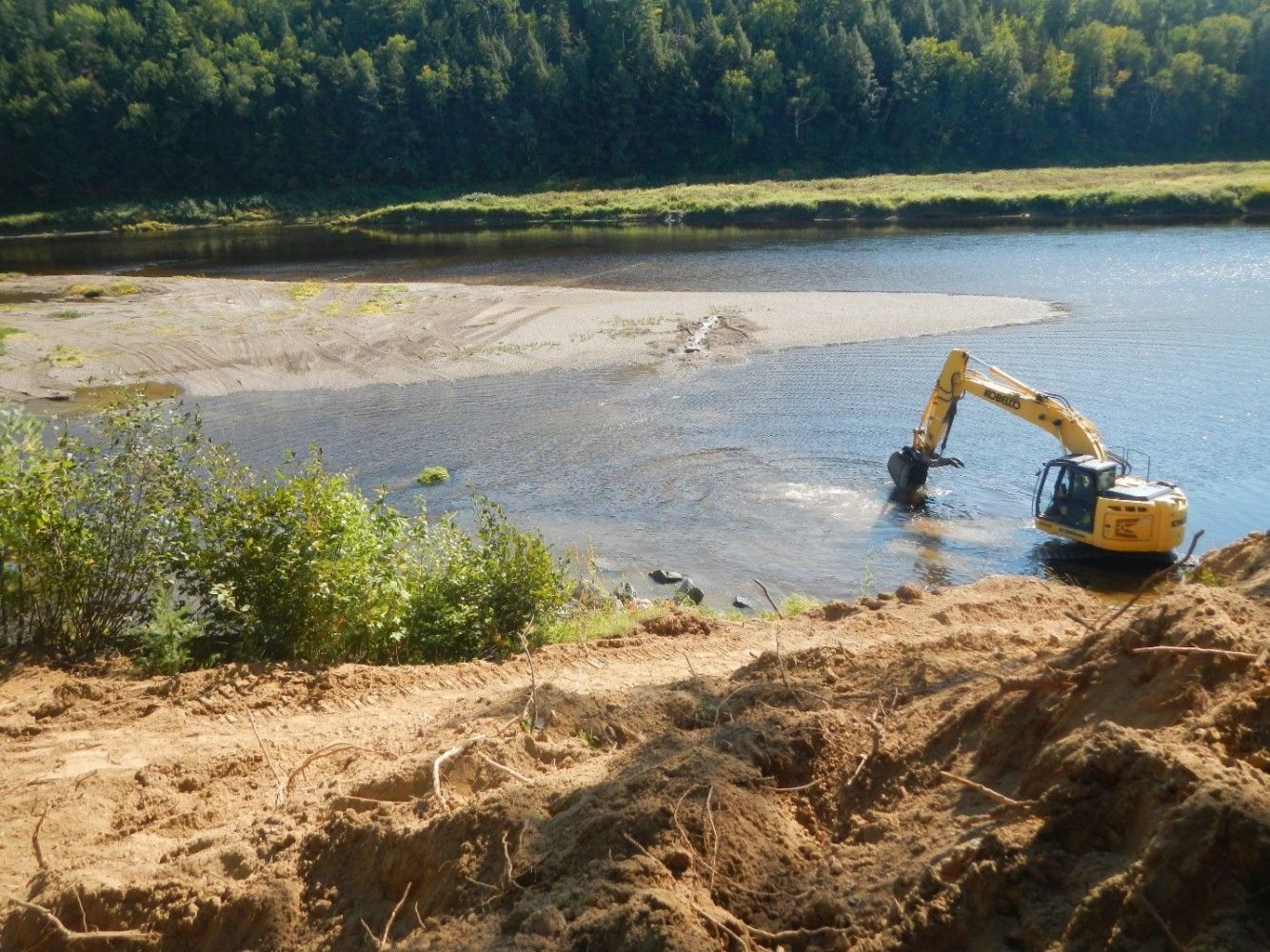MSA’s 2019 Field Season Summary / 2019’s Full Conservation Update

November marks the end of the 2019 field season.
Our smolt estimate program on the Little Southwest saw 2452 smolt captured by our smolt wheel. Of these, 1132 were tagged with non-invasive streamer tags and released 5 km upriver. We were able to recapture 39 tagged smolt. From the number of smolt we recaptured we were able to determine that our smolt wheel was working at about a 4% efficiency rate. We are working on our final smolt estimate for 2019, the results of which will be available in our Annual Report which will be available early next year. (Photo of Smolt Wheel on Northwest River)
In a joint MSA/ASF project using acoustic tagging data, we attempt to determine the survival rates of smolts exiting the river and to identify the locations of areas of high mortality. This year, we tagged 160 smolts with internal acoustic tags (80 on the Northwest Miramichi, and 80 on the Southwest Miramichi). The results of our 2019 tracking program will be available in the new year.
Each year the MSA conducts electrofishing in order to assess the distribution of juvenile Atlantic salmon in the headwater areas of the Miramichi River watershed. During our electrofishing season, the MSA surveyed a total of 17 different sites that included areas on both the Northwest and Southwest branches of the Miramichi river. We focused our electrofishing on areas upstream from where we had removed beaver dams in 2018 and also electrofishing sites that we had previously stocked. All previously stocked sites contained both fry and parr. Ten of 11 sites we electrofished above dams we breached in 2018 contained fry and 9 of 11 of these sites also contained parr. Clearly, salmon are making their way upriver to spawn in areas we cleared of beaver dams in 2018. The MSA also worked in collaboration with DFO to electrofish and collect data on 54 historic baseline sites. The juvenile population estimates from these sites will be available early next year. (Photo of MSA and Anqotum Staff Electrofishing)
Through the MSA 2019 Beaver Dam Management Program we were able to breach 20 beaver dams that were obstructing access to valuable spawning areas. Due directly to their efforts, our field crews had the pleasure of watching adult Atlantic salmon migrating up these once obstructed streams and brooks to open spawning areas.
This year’s habitat restoration project was focused on Government Pool on the Main Southwest Miramichi. We completed this project on September 20, 2019. For this project we installed 4 lines of boulders in the main channel of the river and another V-shaped line of boulders in the back channel of the river. The aim was to increase water flow to the main channel of the river thereby creating more of the type of habitat that salmon prefer. (Photo of Restoration Work being done on Government pool on The Main Southwest Miramichi River)

In an attempt to determine whether striped bass are spawning in rivers beyond just the Northwest Miramichi, a striped bass spawning survey was conducted on three rivers this year, the Northwest Miramichi river, the Southwest Miramichi river, and the Tabusintac river. We searched for striped bass eggs, larvae, and juveniles, and found samples in all three rivers. For this study, from June 7th to June 13th, we conducted ichthyoplankton surveys by trawling each river to collect samples. These samples were then brought back to the lab for analysis. Both eggs and larvae were found on the Northwest and Southwest Miramichi rivers, but on the Tabusintac we only found larvae. To strengthen our survey, from July 17th to 31st we conducted beach seining on the same three rivers. Juvenile striped bass were found in abundance in all 3 rivers. The results of this research will hopefully lead to the delisting of striped bass as a species of concern under COSEWIC (Committee on the Status of Endangered Wildlife in Canada). (Photo of MSA Summer Students forming a beach seine for juvenile Striped bass on the Tabusintac River)

The 2020 field season is shaping up to be equally busy. Currently we are working on funding applications for next year’s conservation projects.
The post MSA’s 2019 Field Season Summary appeared first on Miramichi Salmon Association.
Since 1953, the Miramichi Salmon Association (MSA) and its members have directed their capabilities and their funds to the protection of the entire Miramichi River system. The MSA watches over the Miramichi as a champion of conservation on behalf of anglers, outfitters, guides and all others with economic, environmental and recreational interests in the river.



